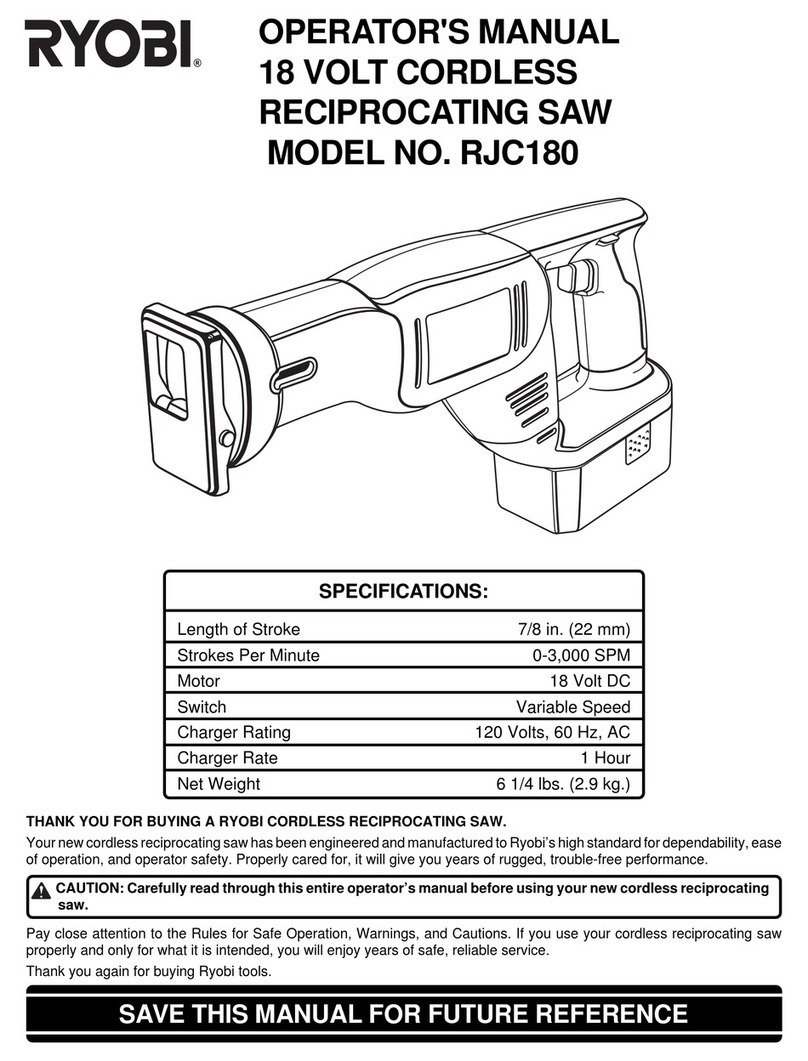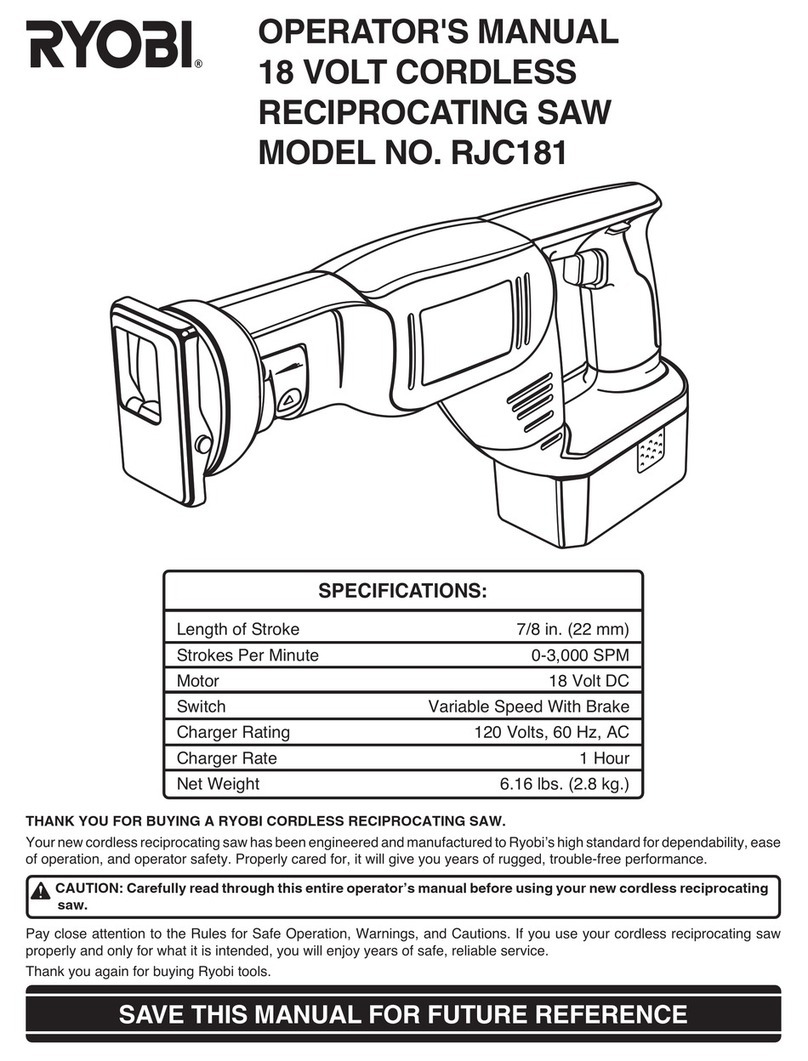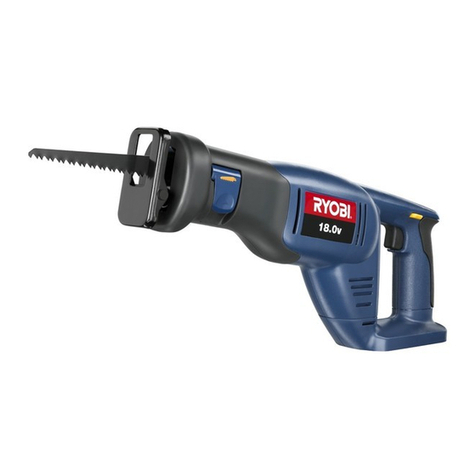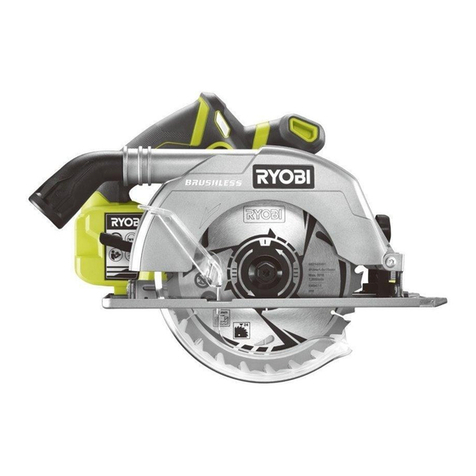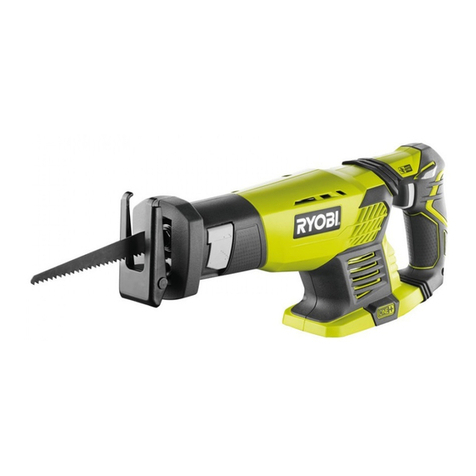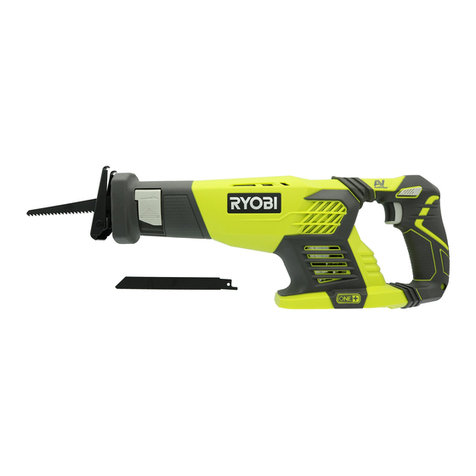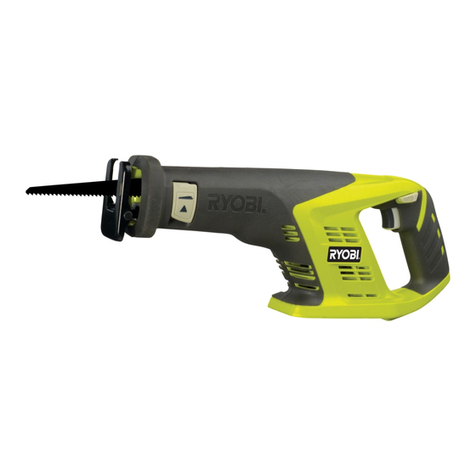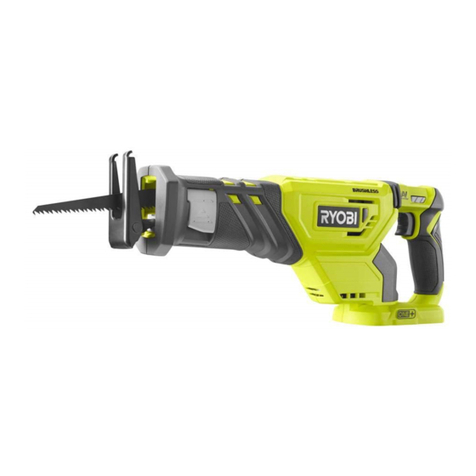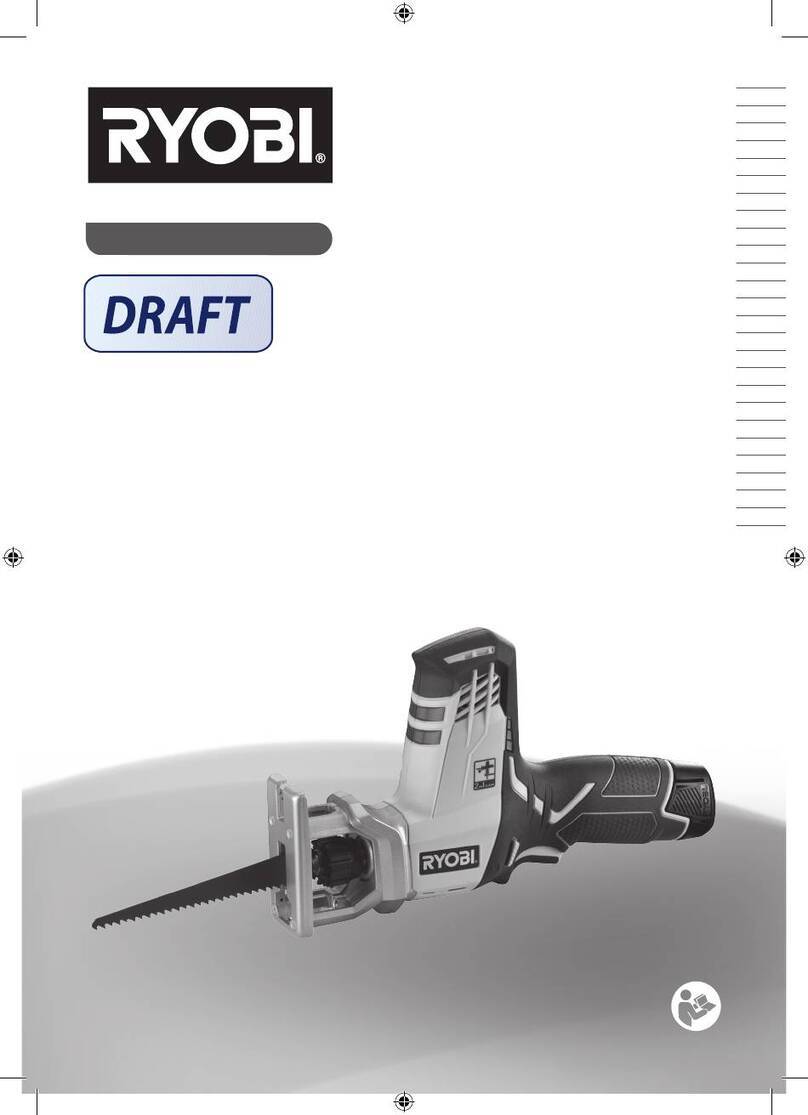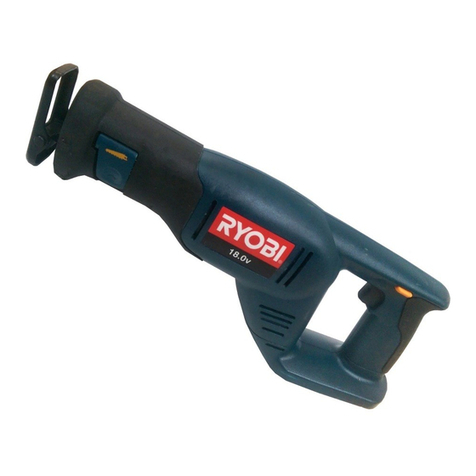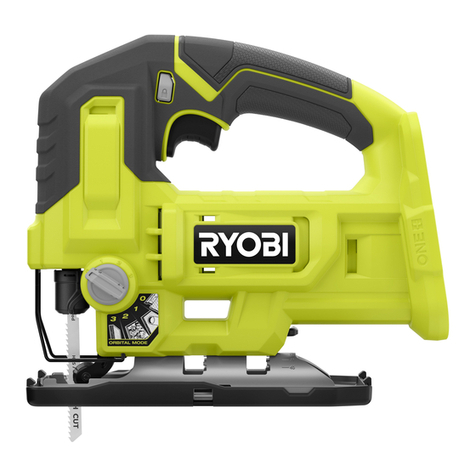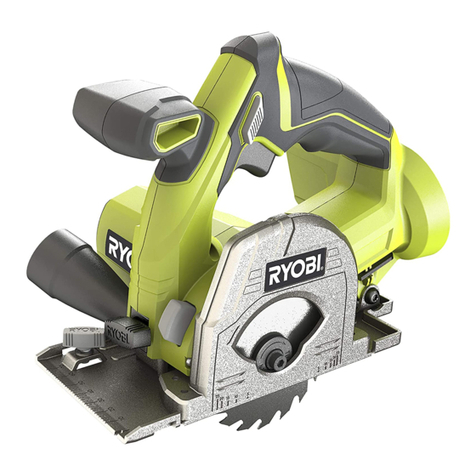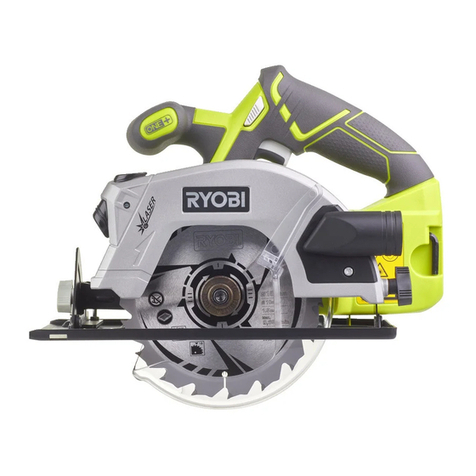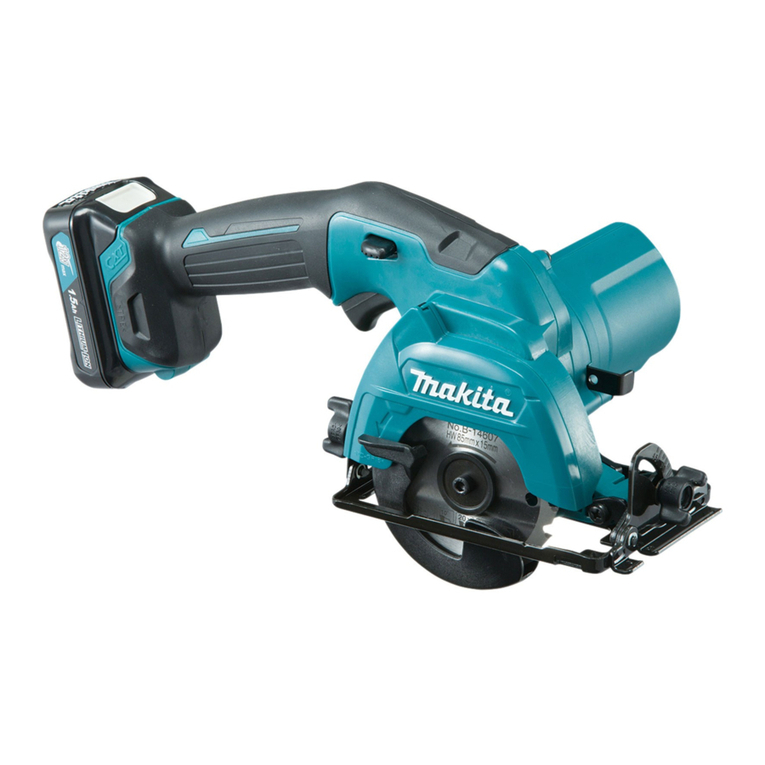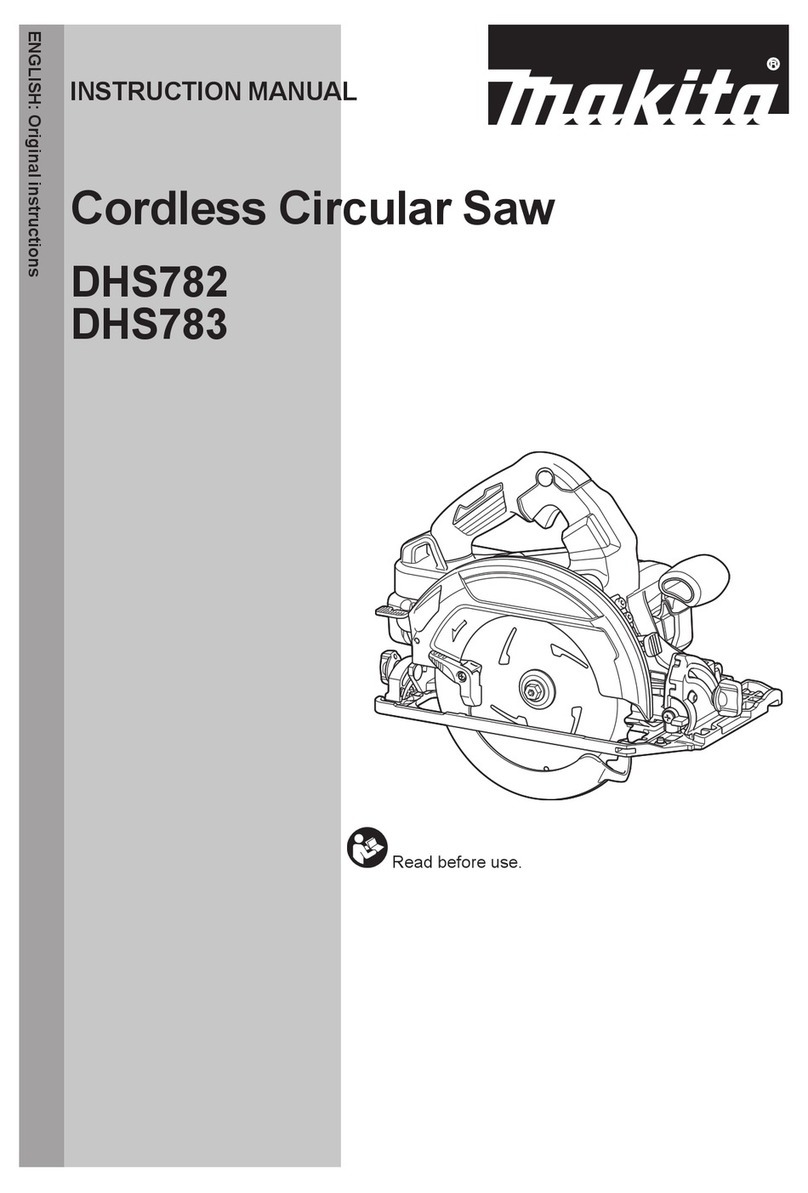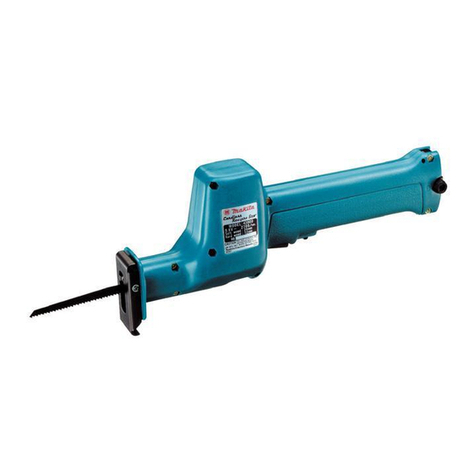
2
■Disconnect the plug from the power source and/
or remove the battery pack, if detachable, from
the power tool before making any adjustments,
changing accessories, or storing power tools. Such
preventive safety measures reduce the risk of starting
the power tool accidentally.
■Store idle power tools out of the reach of children
and do not allow persons unfamiliar with the power
tool or these instructions to operate the power tool.
Power tools are dangerous in the hands of untrained
users.
■Maintain power tools and accessories. Check for
misalignment or binding of moving parts, breakage
of parts and any other condition that may affect the
power tool’s operation. If damaged, have the power
tool repaired before use. Many accidents are caused
by poorly maintained power tools.
■Keep cutting tools sharp and clean. Properly
maintained cutting tools with sharp cutting edges are
less likely to bind and are easier to control.
■Use the power tool, accessories and tool bits etc.
in accordance with these instructions, taking into
account the working conditions and the work to
be performed. Use of the power tool for operations
different from those intended could result in a
hazardous situation.
■Keep handles and grasping surfaces dry, clean
and free from oil and grease. Slippery handles and
grasping surfaces do not allow for safe handling and
control of the tool in unexpected situations.
Battery tool use and care
■Recharge only with the charger specified by the
manufacturer. A charger that is suitable for one type
of battery pack may create a risk of fire when used with
another battery pack.
■Use power tools only with specifically designated
battery packs. Use of any other battery packs may
create a risk of injury and fire.
■When battery pack is not in use, keep it away from
other metal objects, like paper clips, coins, keys,
nails, screws or other small metal objects, that can
make a connection from one terminal to another.
Shorting the battery terminals together may cause
burns or a fire.
■Under abusive conditions, liquid may be ejected
from the battery; avoid contact. If contact
accidentally occurs, flush with water. If liquid
contacts eyes, additionally seek medical help.
Liquid ejected from the battery may cause irritation or
burns.
■Do not use a battery pack or tool that is damaged or
modified. Damaged or modified batteries may exhibit
unpredictable behaviour resulting in fire, explosion or
risk of injury.
■Do not expose a battery pack or tool to fire
or excessive temperature. Exposure to fire or
temperature above 130°C may cause explosion.
■Follow all charging instructions and do not charge
the battery pack or tool outside the temperature
range specified in the instructions. Charging
improperly or at temperatures outside the specified
range may damage the battery and increase the risk
of fire.
Service
■Have your power tool serviced by a qualified repair
person using only identical replacement parts.
This will ensure that the safety of the power tool is
maintained.
■Never service damaged battery packs. Service
of battery packs should only be performed by the
manufacturer or authorized service providers.
CIRCULAR SAW SAFETY WARNINGS
CUTTING PROCEDURES
DANGER
Keep hands away from cutting area and the blade.
Keep your second hand on auxiliary handle, or
motor housing. If both hands are holding the saw, they
cannot be cut by the blade.
■Do not reach underneath the workpiece. The guard
cannot protect you from the blade below the workpiece.
■Adjust the cutting depth to the thickness of the
workpiece. Less than a full tooth of the blade teeth
should be visible below the workpiece.
■Never hold the workpiece being cut in your hands
or across your leg. Secure the workpiece to a stable
platform. It is important to support the work properly
to minimise body exposure, blade binding, or loss of
control.
■Hold the power tool by insulated gripping surfaces,
when performing an operation where the cutting
tool may contact hidden wiring. Contact with a “live”
wire will also make exposed metal parts of the power
tool “live” and could give the operator an electric shock.
■When ripping, always use a rip fence or straight
edge guide. This improves the accuracy of cut and
reduces the chance of blade binding.
■Always use blades with correct size and shape
(diamond versus round) of arbour holes. Blades that
do not match the mounting hardware of the saw will run
eccentrically, causing loss of control.
■Never use damaged or incorrect blade washers
or bolt. The blade washers and bolt were specially
designed for your saw, for optimum performance and
safety of operation.
KICKBACK CAUSES AND RELATED WARNINGS:
■kickback is a sudden reaction to a pinched, jammed or
misaligned saw blade, causing an uncontrolled saw to
lift up and out of the workpiece toward the operator;
■when the blade is pinched or jammed tightly by the kerf
closing down, the blade stalls and the motor reaction
drives the unit rapidly back toward the operator;
■if the blade becomes twisted or misaligned in the cut,
the teeth at the back edge of the blade can dig into the
top surface of the wood causing the blade to climb out

